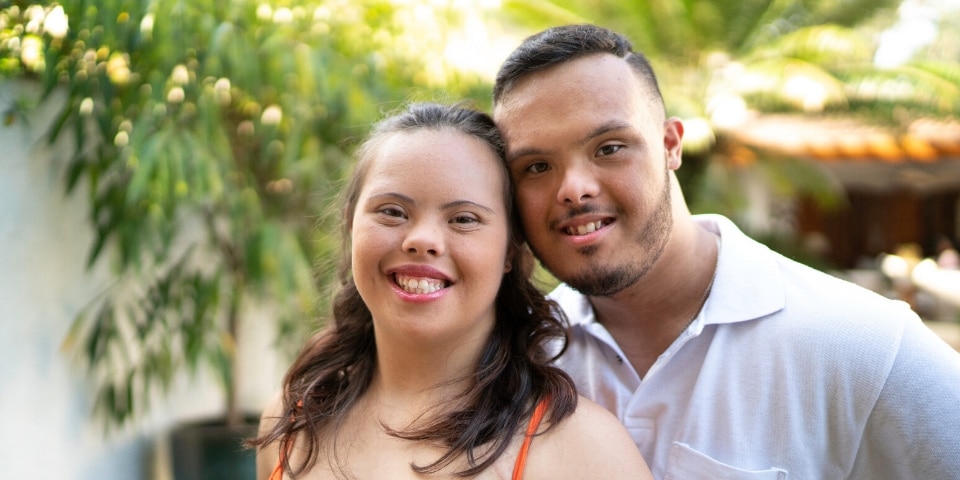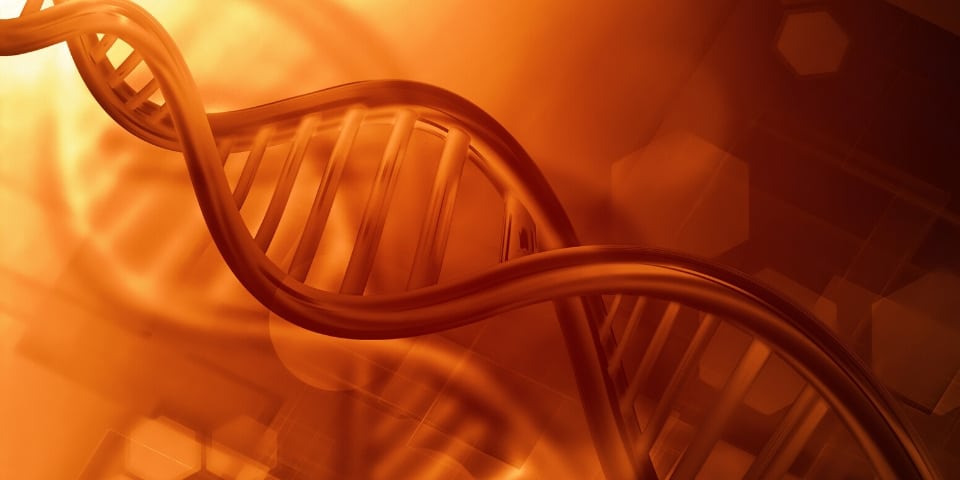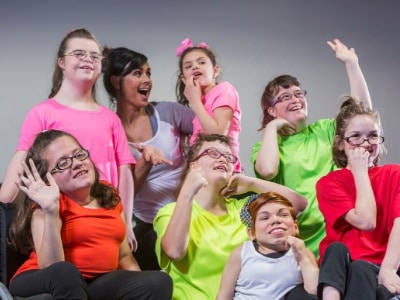What other conditions co-occur with autism?
In Australia, 70% of the time a diagnosis of autism is accompanied by an additional condition or diagnosis, and 40% of the time by two or more additional conditions of diagnosis.
These co-occurring conditions can appear at any time during a person’s development, and some may not appear until later in adolescence or even adulthood.
Several psychiatric, neurodevelopmental, neurological, medical and genetic conditions are also known to co-occur on the autism spectrum at higher rates.
The key conditions that can occur in addition to a diagnosis of autism include:

Intellectual disabilities
Intellectual disability is defined by learning a range of skills at a significantly reduced rate than others in the general population. Signs of developmental delays are evident very early in life.
Intellectual disability varies a lot from child to child and syndrome to syndrome, and ranges from person to person.
Some causes of intellectual disability include genetic disorders such as Fragile X syndrome, Down syndrome, Rett Syndrome.
Intellectual disabilities are often diagnosed correspondingly with autism during early childhood, and are usually identified through signs of developmental delay.
Around 30% of autistic people also have an intellectual disability.
For more information about intellectual disability go to the Australian Institute of Health and Welfare.

Exceptional cognitive skills
Exceptional cognitive skills is where a person demonstrates outstanding skills or knowledge which is above the individual’s general level of ability.
Around 29% of people on the autism spectrum have skills that are considered exceptional, including their ability to remember and recall information, to draw using significant recalled visual detail, or to produce music that is pitch perfect.
These skills or knowledge may not necessarily be functional, such as being able to remember train timetables, but not necessarily being able to catch the train.
Mental Health conditions
Autistic people with may have mental health conditions such as anxiety, depression, bi-polar, obsessive compulsive disorder, personality disorder, schizophrenia and mood disorders These are separate conditions, and are not part of autism.
Research from Monash University presented at the 2019 APAC conference, estimates that around 66% of people with an autism diagnosis are currently co-living with a mental health disorder, and up to 81% will live with a mental health disorder at some point in their lifetime.
While mental health conditions are not a part of autism, some of the characteristics of autism, including social and relational difficulties, language difficulties, and difficulty expressing feelings can lead people on the autism spectrum to feel isolated, anxious and unsupported. This may contribute to a person developing a mental health condition.
This is important for loved ones, and those living, working or going to school with a person on the autism spectrum, to keep in mind.
Clinical depression
Clinical depression can be common in people across the autism spectrum. The signs of clinical depression include low mood, poor sleep and appetite, irritability or a lack of motivation.
Research clearly shows that clinical depression can impact the quality of life of children, adolescents and adults on the autism spectrum. To find out more, or to learn about ways to manage clinical depression, talk to a qualified health care professional or go to Beyond Blue.
Bipolar disorder
Bipolar disorder is a psychiatric condition that can lead to extreme emotional highs (mania) and extreme lows (depression).
Signs of extreme lows can include having a low mood, trouble sleeping, eating or having a poor appetite, or lacking in motivation. Signs of emotional highs can include high energy levels and hyperactivity, and increased self-esteem.
Studies have shown that bipolar disorder is more prevalent in older people on the autism spectrum than in children. To find out more or to learn about ways to manage bipolar disorder talk to a qualified mental health professional or visit the Black Dog Institute.
Anxiety disorders
Anxiety disorders are common among children and adolescents in Australia, with a reported 7% of young Australians diagnosed with some form of anxiety disorder each year.
As with many mental wellbeing challenges, anxiety presents in a variety of ways, as it is based on a physiological response to a “real or perceived threat in the environment, a response that maximises the body’s ability to either face or escape danger – ‘fight or flight’.” This can present in a number of ways: being constantly worried or afraid; being tense and on edge, nervous or scared; feeling panicky, irritable, or agitated; or feeling physically sick, like you may vomit.
Around 40% of people in Australia on the autism spectrum have an anxiety disorder.
It is particularly important to recognise and treat anxiety in autism as it can exacerbating social withdrawal and make repetitive behaviours which can negatively impact on a persons quality of life. Untreated anxiety in autistic individuals has also been linked to the development of depression.
To learn more about anxiety or to seek support go to Black Dog Institute.
Obsessive compulsive disorder (OCD)
Key signs of obsessive-compulsive disorder (OCD) are having thoughts that you don’t want to have and cannot get rid of, and the need to do specific behaviours to prevent often unrelated negative future events from occurring. People with OCD behave in a “compulsive” way, such as arranging or counting things, or washing their hands over and over again in response to these thoughts and worries.
Research indicates that around 17% of autistic individuals had a co-occurring obsessive-compulsive disorder (OCD) compared to around 2-3% of the general population.
For help and support relating to OCD see your GP, or go to Beyond Blue for more information.
Neurological conditions
Other neurological conditions such as Epilepsy, and Tourette syndrome have been reported as occurring at higher rates among autistic people.
People with Tourette syndrome make involuntary, rapid, repetitive sounds and movements called involuntary tics. Tourette’s is an inherited neurological disorder and can begin between the ages of two and 21 years of age.
Epilepsy is a neurological difference that leads to a person having repeated seizures, which can be visible or not. Current statistics show that 3% of Australians have epilepsy. Around 1% of the general population has epilepsy compared to around 10% of the autistic population.
Go to Health Direct for more information and information about how to manage Tourette syndrome and epilepsy.
Attention deficit hyperactivity disorder (ADHD)
Attention deficit hyperactivity disorder (ADHD) affects a person’s behaviour and development. ADHD is characterised by behaviours such as:
- inattention, or a difficulty in concentrating, following instructions, or completing tasks;
- impulsivity; and
- overactivity, or being fidgety and restless.
Studies have shown increased prevalence of both attention deficit hyperactivity disorder (ADHD) and autism in recent years, with research suggesting that up to two-thirds of people with ADHD show features of autism.
For more information about ADHD and how best to manage it, go to ADHD Australia.
Learning difficulties and disabilities
Around 10 to 16 per cent of people have trouble with learning. This can be caused by: developmental delay; poor coordination due to motor skill problems, emotional issues and traumas; lack access to appropriate education; interrupted school attendance; or health issues.
Some people, around 2 and 4 per cent, have academic skills that are significantly below expectation for their age and intellectual ability.
These are called learning disabilities, and include:
- Dyslexia: problems with reading, spelling and writing.
- Dysgraphia: difficulties expressing through the written word, including spelling, handwriting and written composition.
- Dyscalculia: problems understanding numbers, maths and thinking quantitatively.
- Dysphasia: problems with oral language including speech and comprehension.
Studies have shown that there is an increased prevalence of autism among children with a learning disability. This means it’s important for parents and carers to seek advice from teachers and professional support providers about developmental delays specific to learning and academia.
For more information about learning difficulties or disabilities go to Understanding learning difficulties on the Australian Government Department of Education website.
Motor skill disorders and body function difficulties
Motor skills are defined as movements and actions of the body’s bone and muscle structure. They are categorised to into gross motor skills and fine motor skills.
Gross motor skills relate to the movement and coordination of the limbs and other large body parts, and impact activities such as running, crawling and swimming.
Fine motor skills relate to smaller movements occurring in the wrists, hands, fingers, feet and toes, and impact actions such as picking things up, writing carefully, or even blinking.
Motor skill disorders impact a person’s ability to perform movements requiring fine and/or gross motor skills, and the number of motor difficulties in autistic people has been identified as relatively high.
Other common bodily functions have also been related to autism, including sleep, gastrointestinal and feeding difficulties.
Researchers have found sleep disturbance to be the second most common physical co-condition found in people on the autism spectrum, after epilepsy.
Studies have also found that around 50% of autistic individuals experience some form of gastrointestinal problems.
Feeding problems, including picky eating, chewing and swallowing, in autistic children are also common, with studies showing up to 70% of autistic participants experiencing feeding problems as opposed to 45% in children without autism. There are a range of reasons why an individual may experience difficulties with feeding, including motor issues, fine motor issues, sensory sensitivities, medical and behaviours concerns.
Gender dysphoria
Gender dysphoria is defined as the “distress or discomfort that may occur when a person’s biological sex and gender identity do not align”.
Research studies have indicated that people with autism are more likely to experience gender dysphoria, at a rate eleven times greater than the general population. As such, autistic people may need support to understand and accept their gender identity.
For more information about gender dysphoria and how to manage it go to Health Direct.



